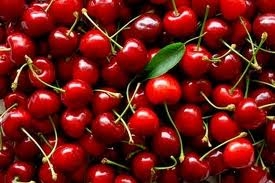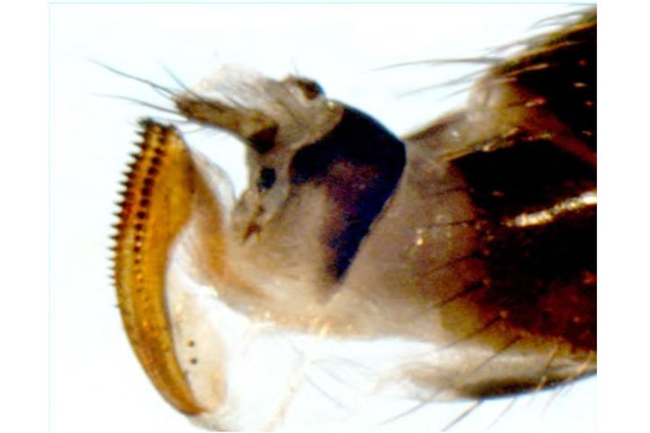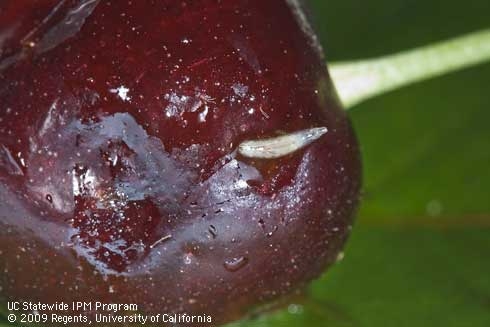

Spotted wing drosophila (SWD), Drosophila suzukii, is a fruit fly that infests soft-fleshed fruit such as cherries, raspberries, blackberries, blueberries, and strawberries. A native of Japan, SWD found its way to California in 2008 and has been giving commercial and home gardening operations problems ever since. Unlike its relatives, SWD attacks fruit as it ripens as well as damaged or overripe fruit. This is due to the female’s serrated ovipositor that allows her to literally saw into healthy, intact fruit to lay eggs. Females oviposit or “sting” healthy ripening fruit and deposit 1-3 eggs per sting site, and can go on to sting many more times. Eggs hatch and grow into maggots that feed on the fruit, turning it brown and soft.
Bill Krueger, Farm Advisor and County Director for Glenn County Cooperative Extension, found SWD on his cherries this week. He identified the pest on an early-ripening variety, but hopes he’ll be able to protect his second variety that ripens a little later. He's lucky to have caught it, as most backyard gardeners won't see the microscopic punctures or other signs of SWD until it is too late. 
Because SWD infest healthy fruit it is essential to identify early and take appropriate measures. Waiting until harvest to spray or take other measures will not be of any use because maggots are already in the fruit. Some management options highlighted in “Pest Notes” a publication of the UC Statewide Integrated Pest Management System Program, include: securing a fine mesh netting over whole plants pre-ripening to exclude adult females, early harvest to reduce exposure, and spraying organic insecticide spinosad (“Monterey Garden Insect Spray”) 2-3 weeks before harvest just as fruit turns from yellow to pink. Another application may be needed 7-10 days later.